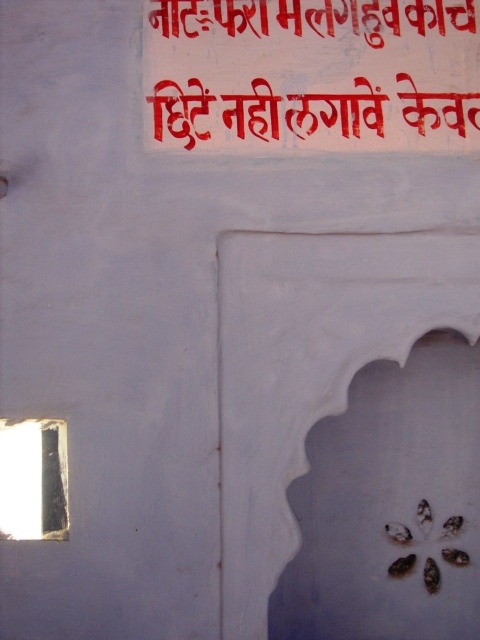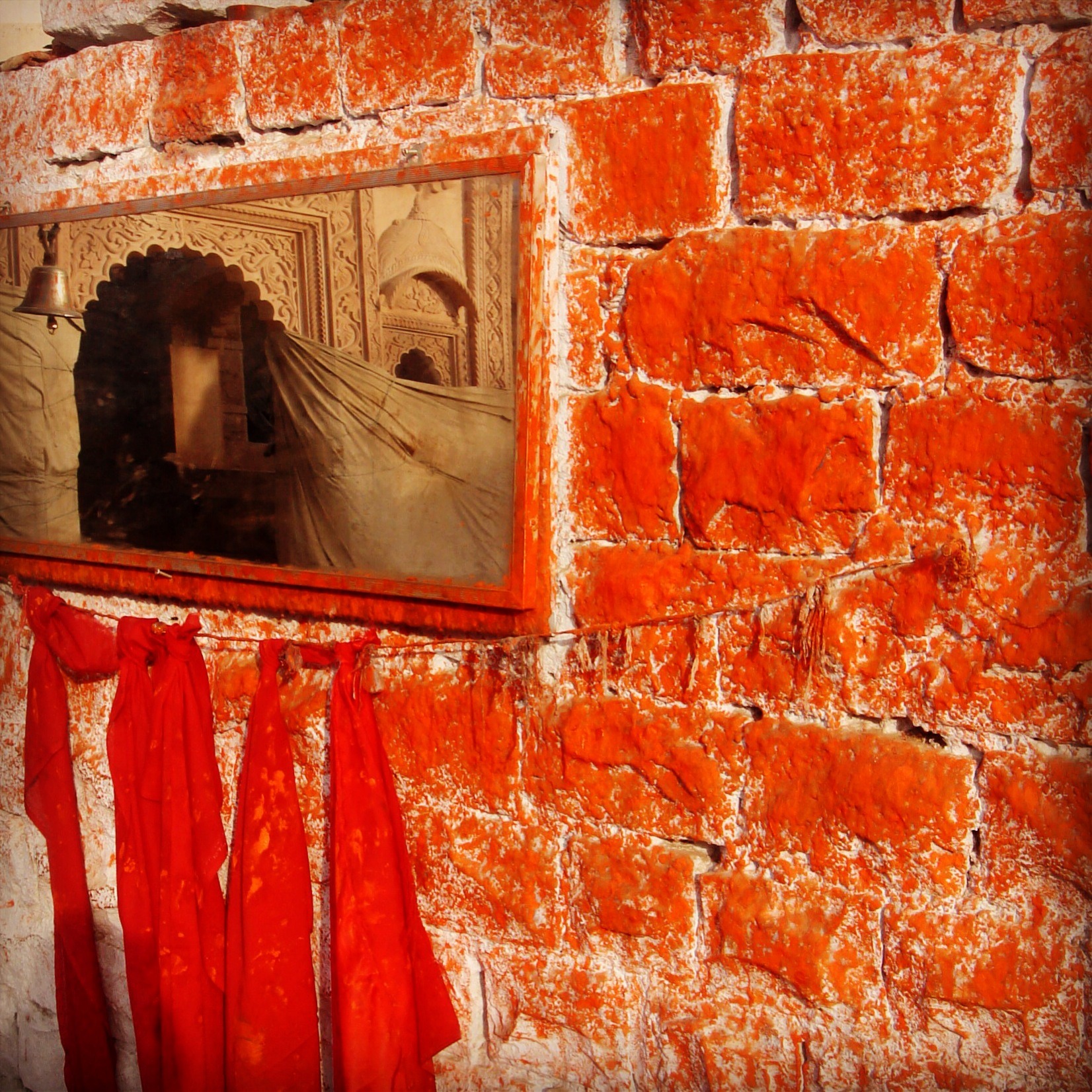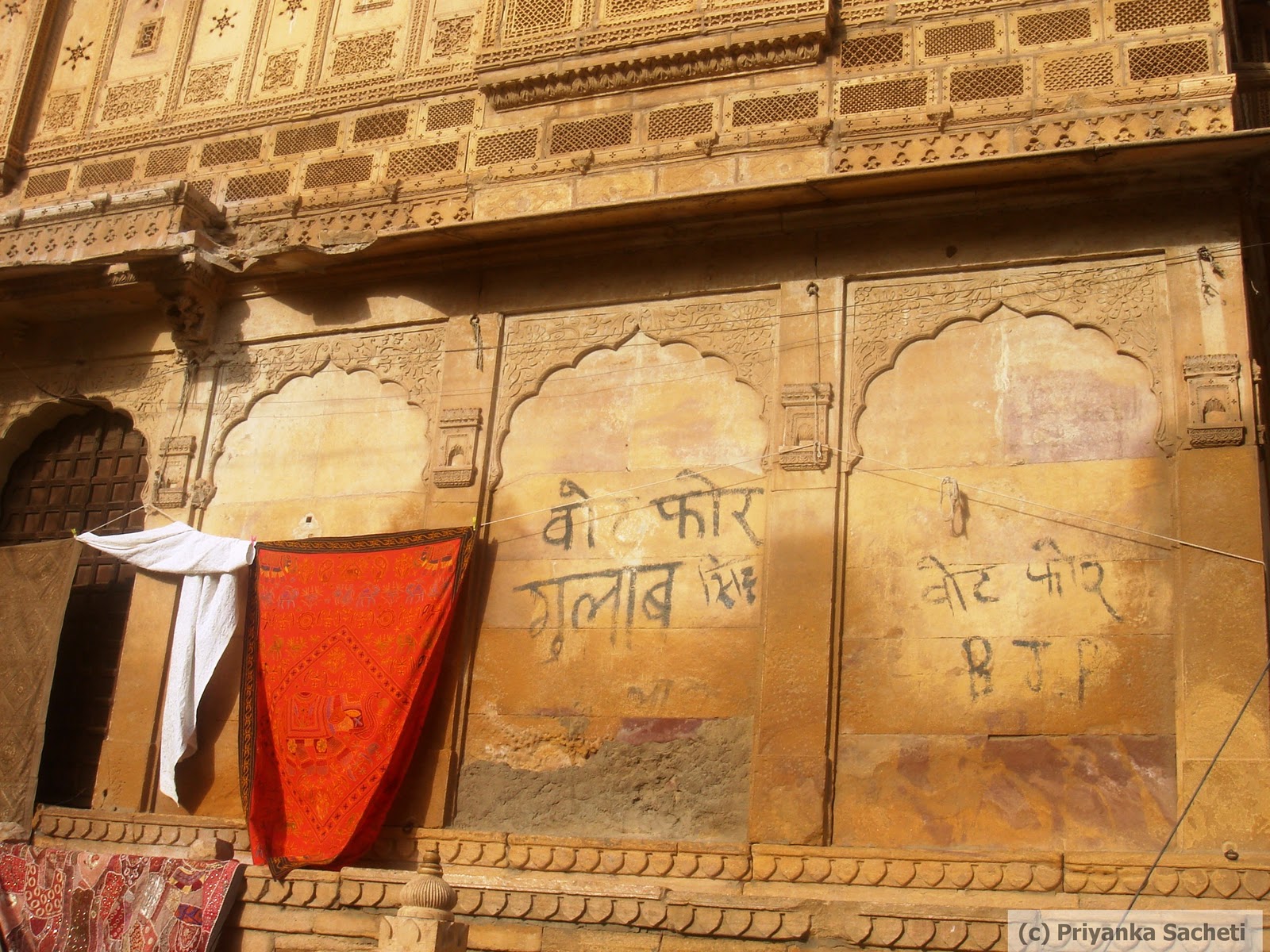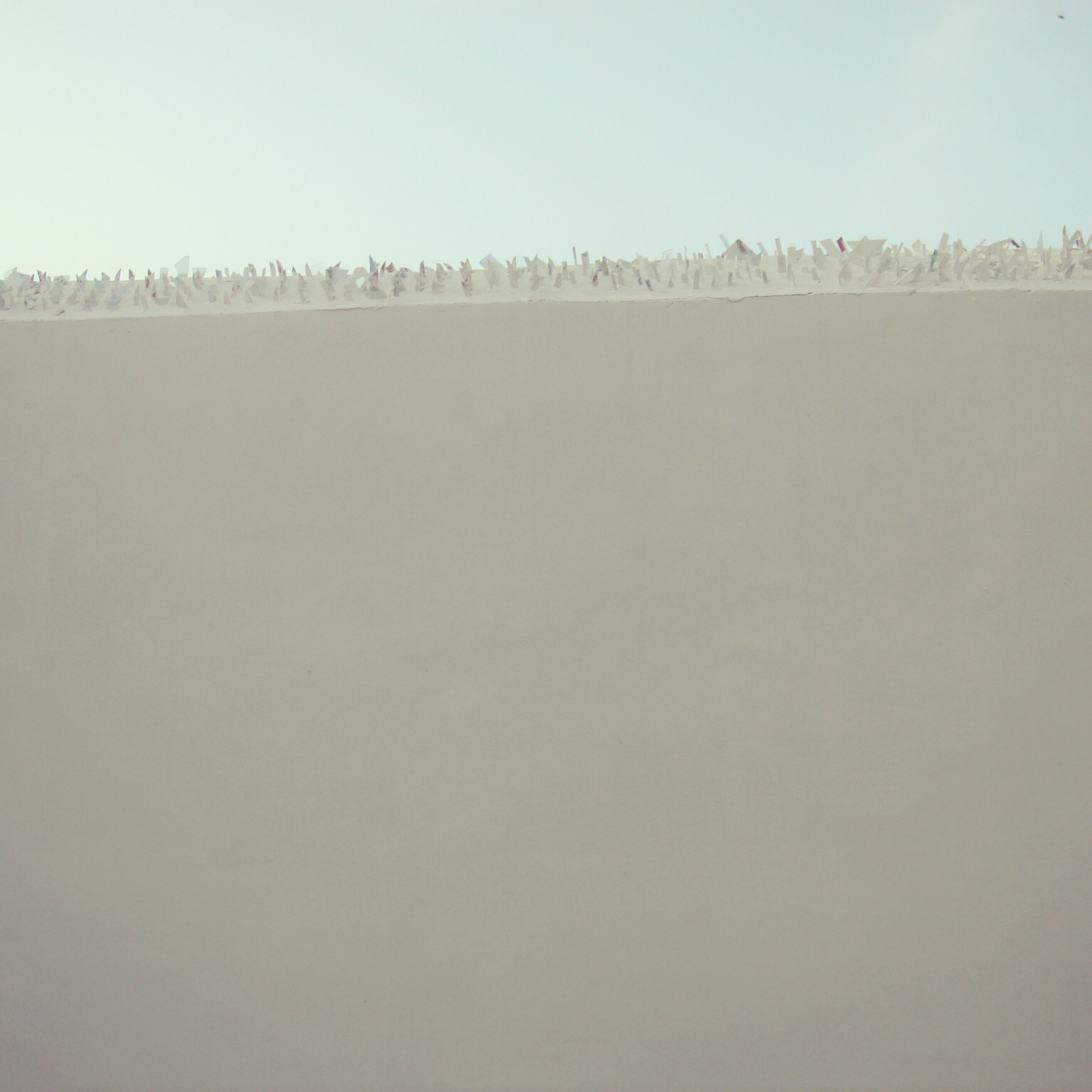For me, walls are mirrors:

Mirrors which reflect the outside to show the inside. Looking inside the mirrors, you are looking inside yourself. Beneath the lilac, floral-marked skin lies a silver lake of a layer: swim into the lake to find yourself, that part of yourself which you thought had misplaced.
Layered stories:

When I look at the walls, their surfaces become alive and dynamic, like a movie screen: thrumming with the words and thoughts and ideas of so many — and when you look at that wall, you are not looking at the wall per se, you are looking at the sum total of all the thoughts and fears of those who have earlier looked into the wall. And when you lean against the wall, you do not just merely recline against brick and stone and concrete and paint and whitewash: those just constitute the facade of the layers that lie inside and outside the wall. Like with soil sliced through at a dig, you become an archaeologist picking through the layers to hear stories accumulated over the years.
Look-Books:

I stand across one of the walls belonging to the Jaisalmer fort. This wall represents an alternate Jaisalmer, one unshackled from its customary glossy postcard prettiness of golden dunes and architecture and camels. In the corner, there is the tourist regalia waiting to be bought: the scarlet and mauve patchwork bedspreads, an omnipresent reminder that Jaisalmer is essentially a touristopolis, all said and done. Above, one espies the dainty Rajasthani jali detailing that has made Jaisalmer so internationally photogenic. Yet, the textured surface beneath the trademark Jaisalmer yellow and the ‘Vote for Gulab’/’Vote for BJP’ scrawled across the stone add new layers to the many that the fort wall has worn over the years. This is what gives this wall a personality — the personality of a feisty, eccentric Jaisalmer, existing for itself, rather than an entity to be photographed and consumed and eventually, said goodbye to. This is what Jaisalmer can also look like, the wall tells us, only if you would want to care to look.
Questions:

This is a wall in a Jain temple in Jodhpur an hour before twilight. I took the photograph when I was inside the temple. The wall was newly painted white as were the shards of glass protruding from its upper surface. If I had gone at noon, I would presumably have had to shadow my eyes from the glare of the white and the glittering glass pieces themselves, the latter reminiscent of a sea surface during the day. At dusk, the wall was calmer, more plangent, shadowed a warm gray. When I see this picture after a while, I have to remind myself that I have photographed a wall in a temple and that it essentially functions as a fortification of stone and glass, both warning and forbidding. It is a different matter altogether, though, as to whom it forbids and to whom does it warn: those on the inside or the outside?
When I look at this photograph, I first see a canvas of white, the inflections of light not withstanding. My favorite color happens to be white: it represents peace, stasis, and calm. For me, staring into white is akin to drowning in nothingness: a white black hole, you could say. Eventually, as my gaze reluctantly travels upwards, I encounter the glass shards, thickly and bluntly littered across the wall surface, as if someone had shredded a square of glass over the wall. Whoever painted the wall also thought it wise to paint the shards in white. If the shards had not been painted, the juxtaposition of all that variegated color against the unrelenting white would have formed an arresting visual contrast though. In the photograph, the fact of the shards being white renders them paper-like, investing them with an origami beauty. There is a delicate fragility to the wall in the image that is notably absent in actuality. In reality, despite being cloaked in white, the glass shards still glitter gray-green, reminding you that theirs is a functional, not aesthetic, presence.
Priyanka Sacheti is an independent cultural writer living in Pittsburgh. Her work has been featured in Gulf News, Khaleejesque, and Brownbook. When she’s not busy working on a collection of short stories or Instagramming, she blogs at I Am Just a Visual Person and Photo Kahanis. She tweets at @priyankasacheti.












